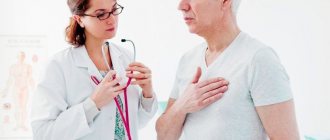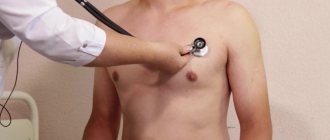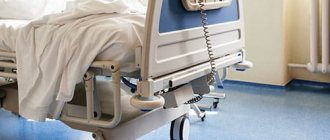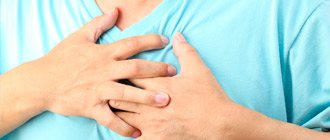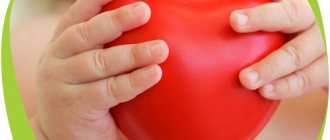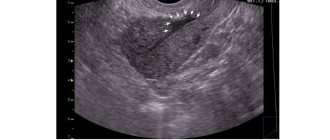Nina Andreeva-Ross Health June 03, 2020
Every third inhabitant of the planet suffers from arrhythmia, that is, a violation of the heart rhythm. Many do not consider this a disease at all and do not receive any treatment - until they suddenly lose consciousness on the street, and this often happens to young people. Moreover, 25% of ischemic strokes are associated with arrhythmia. If your heart beats out of sync, how can you restore its rhythm? The director of the National Medical Research Center for Surgery named after A. A. V. Vishnevsky, President of the Russian Society of Arrhythmology, Academician of the Russian Academy of Sciences Amiran REVISHVILI.
Photo: Pixabay/Pexels
— Amiran Shotaevich, what are the causes of arrhythmia? Why does the heart, which for the time being had a clear rhythm, suddenly begin to lose its rhythm?
— This could be due to many circumstances: heart disease, disorders of the autonomic nervous system, arterial hypertension, changes in hormonal status (the risk increases in menopausal women), thyroid disease, bad habits (smoking, alcohol), hypothermia and much more...
Including the same stress. Their constant “presence” triggers inflammatory processes in the body that destroy cardiac tissue and cause heart rhythm disturbances. Or emotional burnout syndrome. That is, a feeling of dissatisfaction with life combined with overwork and irritability - the heart rate can also suffer from it...
Therefore, I advise everyone to try to be optimistic, lead an active lifestyle, and walk in the fresh air for at least 45 minutes every day. Do not smoke and be sure to monitor your blood pressure.
— People are mainly familiar with three types of arrhythmias: tachyarrhythmia (with a heart rate of up to 120 - 150 beats per minute), bradyarrhythmia (with a heart rate of less than 55 beats per minute) and atrial fibrillation. But cardiologists say that there are many more varieties and each type is treated differently.
- This is true! In addition to tachycardia and bradycardia, arrhythmias are divided into supraventricular and ventricular, depending on what part of the heart they originated in. According to another classification, arrhythmia can be paroxysmal (paroxysmal) and constant (chronic).
There are also many arrhythmias, in which the heart beats unevenly. The most common of them are extrasystolic (premature contraction of the entire heart or just the ventricles) and atrial fibrillation (chaotic contraction of individual groups of muscle fibers, the pulse reaching 100 - 150 beats per minute).
Atrial fibrillation is one of those sudden disturbances in heart rhythm in which you should immediately call an ambulance. However, she is already one of the most frequent reasons for her arrival.
— How dangerous is this or that arrhythmia?
— With the same atrial fibrillation, there is a high risk of the formation of blood clots, which can move through the vessels and clog them, creating the threat of a heart attack or stroke. If rhythm disturbances are associated with a rare pulse, then there is a threat of short-term cardiac arrest, stopping blood circulation and leading to loss of consciousness.
Related article:
Scientists from St. Petersburg are creating a vaccine against coronavirus in the form of “yogurt”
But there are types of arrhythmias that are completely harmless and do not lead to significant consequences. The insidiousness of this disease is that arrhythmia can be asymptomatic. Therefore, even if you feel well, an irregular rhythm detected by a home blood pressure monitor is a reason to contact a cardiologist.
It is worth consulting with him, even if no further treatment is required. For example, sometimes patients complain of heart failure, freezing followed by a sharp jolt. This condition often occurs during physical activity or from excitement, and quite often occurs at rest. With such extrasystole, it is useful to take a sedative.
And, for example, during magnetic storms, sometimes this happens: an arrhythmia occurs, but after some time it goes away safely. But you need to know that at this time there was a slowdown in blood flow, which worsened the nutrition of vital organs, and even the blood became thicker. This means that you need to keep medications against the formation of clots in your blood vessels on hand. But a doctor must prescribe them.
There are also a few very simple tips that can somehow calm down a sudden strong heartbeat. If a person is simply very worried or afraid of something. Sit in a chair or lie on the bed, breathe slowly, deeply, measuredly - this will quickly normalize your rapid pulse. And one more thing: take a deep breath, pinch your nose, tense your stomach - your pulse will quickly return to normal.
You can use this psychological technique. Feeling an attack approaching, a person usually intuitively grabs his heart, as if trying to block the pain - he seems to calm the heart, giving it the command to beat slower. Give the same command to your heart: “Beat slower... Even slower...”.
— Atrial fibrillation, as you said, is one of the common causes of strokes. Is it possible to somehow get rid of it?
— Treatment must begin with the elimination of the underlying disease that led to the arrhythmia (for example, high blood pressure). There is also drug treatment. If the doctor has already accurately diagnosed “atrial fibrillation,” then he will prescribe it. If therapy does not help, then you should consider surgery - it is called ablation.
Until recently, arrhythmia was treated by open surgery with the connection of a cardiopulmonary bypass system. Although the focus of the disease is tiny, only a few millimeters, it is difficult to find. We have developed a new method for searching for this very source - an original procedure for computer surface mapping.
Electrodes are placed on the patient's body and they simultaneously record electrocardiograms. A lot - up to 240 cardiograms. The patient then undergoes an MRI of the chest. After processing the tomography results, the doctor receives a 3D model of the heart, on which the source of the arrhythmia is indicated with maximum accuracy. Today our technology is used in many countries around the world.
Once the source of the arrhythmia is identified, it is eliminated using a catheter procedure. Catheters are inserted through the femoral artery or vein, which, moving through the vessels, reach the heart and “cauterize” the arrhythmogenic zone. Treatment is carried out under X-ray control. Moreover, with the help of X-ray surgery, diagnosis and treatment are easier and faster. The procedure is performed under local anesthesia and takes no more than an hour and a half.
Today in Russia, electrocardiographic heart mapping technology is used in many clinics. Tens of thousands of procedures are performed, but the need is one and a half times greater.
Another procedure, the installation of a pacemaker, was worked out in the same way. It is required for patients with bradycardia. Every year more than 40 thousand operations are performed in the country, which is fifteen times more than was performed ten years ago, but three times less than necessary.
— What prevents all those in need from undergoing the procedure? Are there not enough medical centers?
— There are not enough highly qualified specialists! Each patient has a different type of arrhythmia, so there cannot be one standard operation for everyone.
In general, an arrhythmologist is a rather rare specialty. This is a multidisciplinary doctor. He must be equally proficient in all treatment methods (electrophysical diagnostics, catheter, thoracoscopic and surgical methods) in order to choose the treatment method that is optimal for the patient. To work independently, he needs to study for at least ten years and perform at least a thousand procedures during this period.
What is extrasystole?
Listen, can you feel the rhythm of your heart?
Normally, you should not hear or feel its beating. If this does happen, then this is a reason to think about it and go to the doctor. Moreover, if you feel a slight blow to the chest, and then a pause, and this brings discomfort, then you are faced with an extrasystole. In scientific terms, extrasystole is a process during which a sudden additional contraction of the heart occurs due to an electrical impulse in one of its sections. Extrasystole is the most common type of arrhythmia.
According to statistics, extrasystole is recorded in 70% of healthy people. In more than 65% of cases, ventricular extrasystoles develop, 25% occur in the atrial ones and the rest - in
combined variants of extrasystole.
In its normal state, the heart contracts rhythmically, impulses are generated regularly, the sinus node and the electrical signal move according to the direction, down to the ventricles. But when the work of the heart is disrupted, a premature electrical jump occurs - an extrasystole. After it there is a pause, and then the heart begins to beat rhythmically again.
How does the heart's electrical system work? The sinus node is the main conductor of rhythm; its electrical signal is distributed throughout the atria, lingers slightly in the articular node and spreads throughout the ventricle.
During extrasystole, the sinus node temporarily stops functioning, because of this, the heart seems to turn off for a moment, literally freezing. Then an electrical surge appears in the ventricle and a contraction occurs, the heart begins to beat again, and the rhythm is restored.
What is premature contraction? This is a heart condition in which the heart beats earlier than it should. When the heart functions normally, the organ fills with blood. And when an extrasystole occurs, its work is suspended for a split second.
Why is the heart often found in sayings?
Since this organ is one of the vital organs in our body, it is not surprising that this word is often used in various phraseological units. In essence, the phrase “heart skipped a beat” means that a person has an arrhythmia due to fear or anxiety.
The word heart can also be found in other phraseological units, for example: “You can’t order your heart” - when the choice is made not by the mind, but by the soul. “The heart does not lie” - with approximately the same meaning about choosing not by reason, but by the sixth sense. “Out of sight, out of mind” - the desire to forget and never see. “Reluctantly” - doing something against your will. “In the hearts” - to do something spontaneously, at the first desire, without thinking it through.
Symptoms
Like most diseases of the cardiovascular system, extrasystole does not have obvious signs and symptoms. Patients simply do not realize that they are experiencing heart rhythm disturbances. And if they do notice, then unscheduled contractions of the heart do not bother them.
Extrasystole feels comparable to a strong push to the chest and a sharp attenuation afterwards. For a second, the patient may feel as if his heart is turning over. Then everything abruptly returns to its place. Some people have such sensations, while others do not. It all depends on the height of the pain threshold, the tolerance of this kind of symptoms, the number and frequency of extrasystoles. As well as the presence of a patient with a cardiovascular disease. For many people, the presence of extrasystole does not bother them at all and they can live with it.
During frequent or prolonged attacks, oxygen starvation occurs, and feelings of panic and anxiety may occur. Such sensations are explained by the production of the hormone adrenaline, which provokes an even greater disruption of the heart rhythm.
Let's consider the common symptoms of extrasystole in patients with heart pathologies:
- Patients with cerebral atherosclerosis experience dizziness and sometimes fainting;
- Angina attacks occur in patients with coronary heart disease.
Other symptoms of extrasystole may be: fever, weakness, sweating, lack of air and pain in the heart area.
To summarize, we can say that during extrasystole, blood does not enter the brain. Because of this, the patient may feel:
- dizziness;
- fainting (if there are many extrasystoles, the person may lose consciousness);
- heat;
- sweating;
- oxygen starvation;
- weakness;
- heartache;
- anxiety.
Arrhythmia
Encyclopedia of Health / Encyclopedia of Diseases
A trouble-free heart is compared to a clock. Normally, it contracts about 60-80 times per minute. A violation of the rhythm of contractions is called arrhythmia - an unpleasant and even dangerous disease that can stop the clock that measures life.
MANY FACES OF ARRHYTHMIA
It is very difficult to draw a portrait of cardiac arrhythmia, it is so multifaceted. There are arrhythmias with accelerated and slow rhythms. Sometimes arrhythmias are asymptomatic, and a person does not notice them at all, but it happens that the minutes count—a disturbance in the heart rhythm can cause cardiac arrest. Let's take an appointment with a cardiologist if you have arrhythmia:
“Doctor, I sometimes feel as if my heart is turning over: it will beat, then it will stop, and then everything is fine again.”
“This morning I feel weak, dizzy, my hands are shaking, and my heart is beating wildly, as if it wants to jump out.” “I started fainting. Short, for a few seconds. But this has happened several times already.” “It happens that I count my pulse, it beats and beats, and suddenly it stops. What is this?"
All these are manifestations of different types of cardiac arrhythmia, and today there are several dozen of them.
YOU WERE NOT STANDING HERE
The heart independently maintains its rhythm. In the wall of the right atrium there is a cluster of special cells (sinus node), which produce a nerve impulse at a certain frequency. Spreading along the neuromuscular fibers, it causes the heart to contract.
Do you like it if someone jumps in line? And in the work of the heart, such cases can occur several times a day. It happens that after one impulse causes the ventricles to contract, the next one occurs earlier than necessary. Because of it, an extraordinary contraction of the heart occurs - an extrasystole, followed by a short pause. It usually lasts less than a second, and, as a rule, is not felt. A small number of extrasystoles occur in everyone every day and are not considered a disease, even if we feel a short jolt in the chest or a sinking heart. In this case, it is enough to take a sedative.
You need to start fighting extrasystoles if their number becomes very large, increases with load and worsens your health. Such arrhythmia often occurs against the background of other diseases: infections, poisoning, diseases of the thyroid gland and, of course, the cardiovascular system: high blood pressure, heart failure, coronary heart disease. First of all, of course, you need to treat them. But this does not always lead to a decrease in the number of extrasystoles, and then other methods are used.
THE HEART BEATS Slowly
In athletes and simply physically trained people, the heart works less often than usual - up to 45-50 beats/min. During sleep, the rhythm may slow down even more. And all this is considered the norm. Such a rare rhythm is called physiological bradycardia . If it does not cause discomfort and is not associated with any disease, it does not need to be treated.
| HOW TO DETECT ARRHYTHMIA? Electrocardiogram (ECG) will answer most questions. If it was not done in time during an attack, the Holter method of daily ECG monitoring is used. The patient wears a small device for 24-48 hours, the recordings of which are then analyzed. ECG mapping is used in more complex cases, when it is necessary to thoroughly examine the entire surface of the heart in order to detect the focus responsible for the occurrence of arrhythmias. Electrophysiological study. An electrode is inserted into the heart cavity through the femoral vein, the abnormal zone is found and the presence of additional conduction pathways is checked. If they are detected, then radiofrequency ablation is immediately performed, destroying the place where the arrhythmia is born. |
It’s a completely different matter when a rare heart rhythm is accompanied by weakness, dizziness, angina attacks, shortness of breath, and fainting. This is already dangerous. Such bradyarrhythmias occur when the normal conduction of impulses through the heart (in the case of blockades) or the production of impulses by the sinus node is disrupted (sinus bradyarrhythmia). There are many causes of bradyarrhythmias. Very often they accompany myocardial infarction (especially if it is localized in the lower wall of the left ventricle). Some medications can cause a heart block. Many infectious and chemical toxins also have a detrimental effect on the functioning of the sinus node.
The choice of drugs that accelerate the heart rate is small. Sometimes the only way to save a person with life-threatening bradyarrhythmia is cardiac pacing (pacing). An electrode is inserted into the heart through a vein - a thin wire connected to a small device that delivers electrical impulses to the myocardium, causing it to contract normally. ECS can be temporary, but if the bradyarrhythmia persists, a permanent one is used. In this case, a device that delivers impulses (often no larger in size than a matchbox) is implanted under the pectoral muscle. The device works effectively for at least 8 years, then it is replaced with a new one. With a pacemaker, you can live peacefully for many years and the quality of life not only does not suffer, but also significantly improves. Millions of people on Earth, including very famous ones, carry such devices.
THE HEART IS RUSHING, WORRIED
Any physical or emotional stress leads to an acceleration of the heart rate. This is normal, physiological tachycardia . But if the heart, for no reason, begins to beat at a frequency exceeding 100-120 beats/min, and even with an incorrect rhythm, this is no longer good. The most common cause of such a frantic jump is atrial fibrillation (one of the types of tachyarrhythmias).
Atrial fibrillation often occurs in people with hypertension, coronary heart disease, and rheumatism. The sensations in this case can be very diverse: palpitations, irregularities, sudden weakness, sweating, dizziness, shortness of breath, lack of air, all kinds of pain in the chest.
It is not atrial fibrillation itself that is scary, but its consequences.
* The first is the threat of thromboembolism . Blood clots gradually form on the walls of the “flickering” atria, which can break off and fly through the vessels to different organs. Often the target for these blood clots is the brain, and then they become the cause of a stroke. It is believed that blood clots in the atrial cavity can appear as early as 48 hours after the onset of an attack of atrial fibrillation. That is why it is extremely important to have time to eliminate it during this time.
* The second reason is the development of heart failure . The heart begins to get tired of working at a high frequency, as a result of which swelling appears, constant shortness of breath, up to severe disability.
But it also happens that atrial fibrillation is persistent and permanent. People live with atrial fibrillation for years, although they are forced to constantly take blood thinners. In 2002, a large international study, AFFIRM, was completed, in which more than 4,000 patients with arrhythmia were divided into two groups. Some fought with all their might to maintain the correct rhythm, while others were only prescribed medications to reduce the heart rate to 80 beats/min and carried out thromboembolism prevention (blood thinners). The results of the study were quite unexpected: after 3.5 years of follow-up, the number of dangerous complications in all patients was the same. So it is not always necessary to fight atrial fibrillation by any means.
RETURN THE RHYTHM OF YOUR HEART
* The most famous and simplest technique for normalizing heart rate is to strain, hold your breath for 5-10 seconds and tense your abdominal muscles. But it does not always help - in particular, it is not suitable for supraventricular tachycardia, which is characterized by a frequent but regular pulse. If this method does not help, rush to the doctor.
* Atrial fibrillation and any other tachyarrhythmia are treated with medications or electrical cardioversion, when the correct rhythm is restored with a short electrical discharge. But, alas, not forever. For many people, attacks of arrhythmia occur again, and quite often. Previously, the only radical way to get rid of them was open heart surgery. Today there is a more gentle “closed” method - radiofrequency ablation. For 20 years it has already been successfully used in the Moscow Scientific Center for Cardiovascular Surgery named after. A.N. Bakuleva. Electrodes are inserted through the vessels and, using a radiofrequency beam, the zone of additional conduction of the heart is destroyed - that microscopic area in which extra impulses arise.
* In the same way, it is possible to defeat ventricular arrhythmia, which often occurs after myocardial infarction. But if a person has suffered more than one heart attack, and several scar zones have formed in the ventricle, such patients have a defibrillator implanted in their heart - a device that controls the rhythm of heart contractions. It itself recognizes the onset of an attack, stimulates it, and if this does not help, delivers a shock to restore the rhythm.
Consultant - cardiologist, doctor of medical sciences, professor, head of the cardiology department of the Scientific Center for Cardiovascular Surgery named after. A.N. Bakuleva, Corresponding Member of the Russian Academy of Medical Sciences Elena Golukhova.
Read a detailed article on diagnosing arrhythmia in another section of our Encyclopedia.
Causes
Extrasystole of the heart can be caused by a number of reasons, which can be divided into two sources.
The first and most basic is diseases of the cardiovascular system. Extrasystole can occur against the background of disturbances in the functioning of the heart, which are accompanied by organic damage to the myocardium. The second block is external:
- pathology of the thyroid gland;
- electrolyte disturbances;
- external influences. For example, being in a stuffy room where there is a lack of oxygen;
- excessive caffeine consumption. This factor causes tachycardia.
Why do we use phraseological units?
There are many such examples. Why do we use them? As research shows, phraseological units make our speech more figurative and expressive, while we use very simple and well-known words and phrases that our grandmothers and great-grandmothers spoke. And the main thing is that these expressions have become widespread both among ordinary people and among the intelligentsia.
The use of phraseological units in colloquial speech indicates knowledge of the language, its history and the ability to use its capabilities. Also, the use of catchphrases in communication creates the impression of being well-read and makes it possible to reveal the character of the speaker, helps to attract the interlocutor, making the dialogue more lively, rich and generally more interesting.
Treatment methods
It sounds strange, but such a problem is sometimes treated with just a regular visit to a psychologist or psychiatrist. The essence of the technique is to remove the patient from a depressive or anxious state, which adversely affects the functioning of the heart.
In practice, drug treatment is also carried out. To do this, you will need to see a cardiologist who will prescribe medications:
- to maintain normal production of adrenaline in the blood;
- used for arrhythmia;
- replenishing calcium levels in the body.
And, as always, do not forget about the folk recipe. It is often prescribed by doctors. For example, to treat extrasystole of the heart muscle, you can use the following recipes:
- Make a hawthorn tincture. To do this, you need to fill the hawthorn with water and leave for 10 days. Take the resulting mixture three times a day, 10 drops.
- Valerian tincture is used in a similar way. To prepare it, pour a few teaspoons of the plant with boiling water in a volume of 100 ml and cook for 10 minutes.
If the heart seems to be tumbling and all of the above treatment methods are ineffective, doctors resort to surgery. To do this, a special catheter is taken, with the help of which special impulses are sent by radio frequencies, necessary for the correct heart rhythm.
FacebookvKontakteTwitterWhatsApp
What causes extrasystole?
Among the causes of extrasystoles in healthy people:
- Overwork;
- Lack of sleep;
- Stress;
- Excessive physical and mental stress;
- Potassium or magnesium deficiency;
- Consumption of alcohol, nicotine or coffee.
Extrasystoles can, however, also be a symptom of heart disease, such as:
- Cardiac ischemia;
- Inflammation of the heart muscle;
- Heart valve defect;
- Heart failure;
- Hyperthyroidism.
Localization area
This is a rather interesting disease from a medical point of view, because it has several types of location in the heart muscle. Supraventricular is the result of arrhythmia, which is caused by foci of impulses in the heart muscle. They are usually located in the atrioventricular septum or supraventricular region. If a person encounters ventricular localization, it occurs due to the formation in the ventricles of the muscle of an absolutely independent source of contraction of impulses, which interferes with the stable functioning of the heart. This problem is more often encountered by older men.
In fact, the symptoms themselves are not pronounced, but as with other arrhythmic disturbances, there is a feeling of the heart tumbling, freezing or increased rhythm. This form of localization does not pose a threat to life, however, if the indicators are elevated, examination and treatment are necessary.
Atrial appears as a result of the occurrence of foci of electrical impulses in the atria. Atrioventricular is the result of the formation of a focus of pathology in the area of the ventricular-atrial septum.
Diagnostics
The easiest way to identify the disease is with an electrocardiogram. This type of study guarantees an accurate and easy calculation of the malfunction of the heart muscle, because all abnormal, normal and rapid contractions appear on the tape.
However, it is not always possible to detect extrasystoles using a cardiogram, because the procedure for obtaining a “snapshot of the heart’s work” lasts a short time and it is during this period that the heart can work like a clock. All this is due to the fact that during the ECG the patient is in a supine position, i.e. does not show activity, but in life the person is usually active.
If extrasystole cannot be detected by this method, the patient is prescribed a Holter mount. This method involves monitoring the patient throughout the day, which should take place in his usual way. It is in this way that the doctor will be able to determine the absence or presence of disruptions in the rhythm of muscle work.


